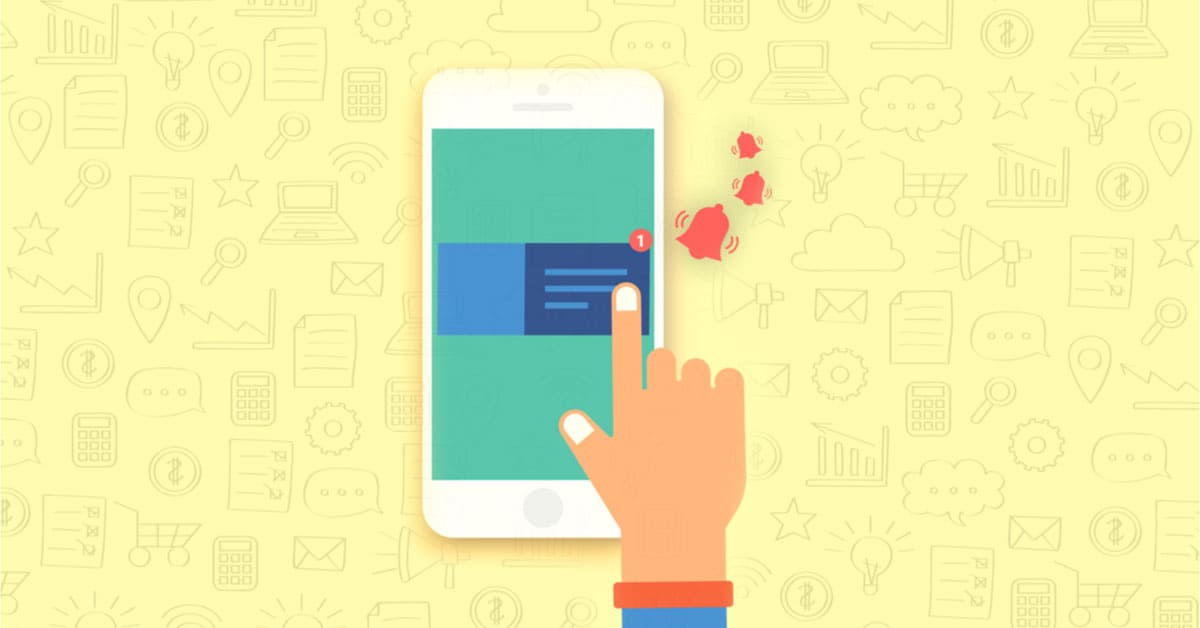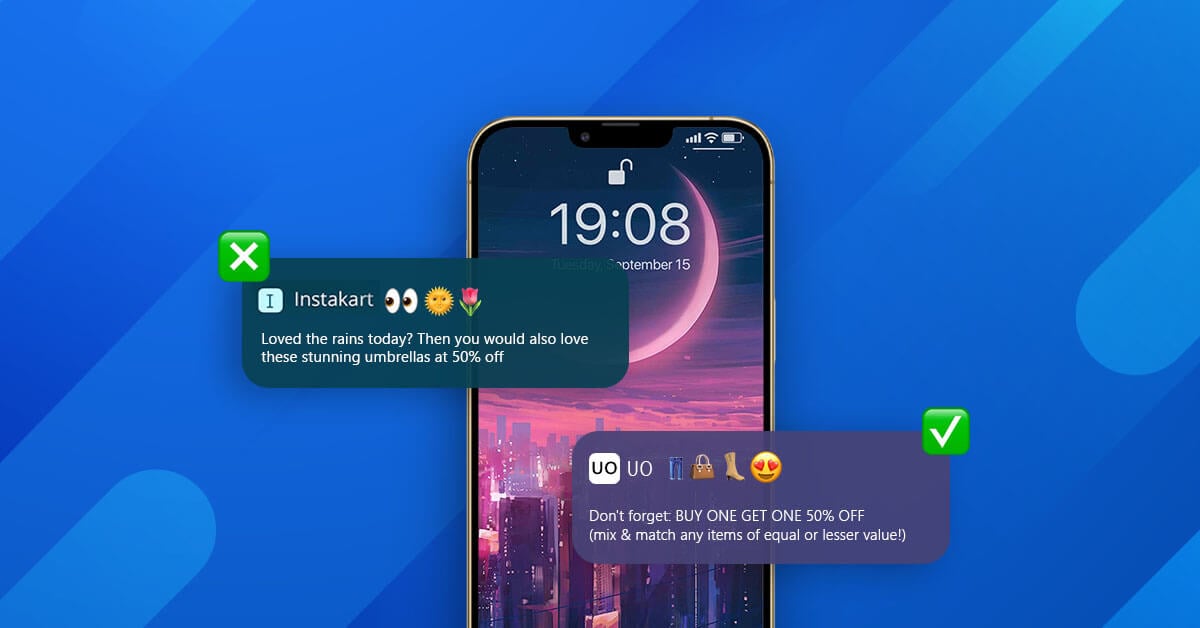There is this very interesting discussion happening on inbound.org, talking about the effectiveness of browser push notifications. The best thing about this discussion is that it brings the end users’ perspectives and experience with web push to notice. And, then it asks the right question – If as a user I find notification as irrelevant and annoying how does it help you as a business get more leads?
Some of the responses that this thread got, give clear insights into the challenges of push notifications as a channel of engagement and conversions:

And, there are a number of other reasons and comments on what is making users refrain from opting in for browser push notifications. In a nutshell, here is the recipe to disaster when using push notifications:
- Spamming user with generic notifications
- Not timing your push notifications right
- Not having a tap or limit on the number of alerts to be sent
- Bad targeting
- Not using a call to action
- Sending non-personalized alerts
- Not testing your notifications
For your browser push notifications to succeed you need to follow certain dos and don’ts that will keep you from faultering. For example, the ground rule is to keep your message short and sweet, around 20 characters.
Another tip is to use emojis with caution. You should not go overboard with smileys or with emojis that are difficult to comprehend. For more on the do’s and don’ts of push notifications check this post. The following image further explains how to nail push notifications for more engagement and conversions:

Optimizing Your Browser Push Notification Begins with Tracking the Right Metrics
The shortfalls and challenges of web or browser push notifications can only be addressed by crafting a push notification strategy based on user behavior. But before you chart out your course of action, you need to measure performance of your past campaigns, know what made them fail or succeed, and then optimize your campaigns to perform better on these metrics. Some of the metrics that you must measure are listed as follows:
- Opt-ins, Click Rates, Click Rate by Platform: These metrics are the foundation of any browser push notification campaign. If users are not ‘allowing’ notifications on their devices, there is absolutely no way you can engage them or get them to buy from this channel. Click rates and open rates indicate the effectiveness of your push notification messaging. Similarly, you also need to keep a track of click rates that your web push notifications are getting on different platforms. If you are getting more click throughs on Chrome as compared to Firefox, it would make sense to find out what’s working well for Chrome.
- Number and frequency of notifications sent: While there is absolutely no limit on the number of notifications that you should be sending in a day, you should definitely not send too less or too many. Also, you should A/B test the frequency at which the same alert needs to be sent, and after how much time interval.
- Time on site and engagement: One important goal for your push notification campaign is to get people to a certain page and engage with it. Another important metric to track is repeat visits every time a notification is sent.
- Delivery time of notifications: Notifications that are ill timed are the biggest turn off for any user. Imagine waking up at 8 a.m. are receiving a string of notifications on your mobile. It is only going to put you off and unsubscribe. Even if your message is personalized and highly relevant, if your notifications are not timed well they will not fetch you much engagement.
- Sales and Conversions: The main or the macro goal for your push notification campaign is to crack the desired number of conversions or sales. You need to keep a track on the number of conversions each notification got, number of sales that your notifications generated, and total revenue generated from your browser notification campaign.
Making Your Push Notifications Work – Optimizing for Better Results
- Optimize for Opt-Ins: The inbound discussion that we talked about in the beginning of the post clearly shows of distracting push notifications are for users. Most users therefore would never allow push notifications to run on their devices. How do you get these users to first opt-in and increase your subscriber count? Here are some ways in which you can optimize for notifications for opt-ins:
- Don’t ask users to opt-in immediately. Give them time to know your offerings, engage with your products and interact with your app or website. Users seldom allow notifications from an app or website that they don’t understand or haven’t gotten to know yet.
- Make an irresistible offer: Incentivizing users can encourage them not only to sign up but also keep them engaged with your website. Coupons, discounts, free ebooks, vouchers – all make great incentives for opting in.
- Time your opt-in based on user behavior. Where it makes sense not to show opt-ins unless the user gets to know you, there also has to be a right time to trigger your opt-in message. For eCommerce stores this trigger could be the first purchase made by any user. Or, it could be his third browsing session on the website.
- Optimize for Timing: There is an interesting explanation on the importance of timing by Nir and Far. Nir’s book ‘Hooked: How to Build Habit Forming Products’ talks about co-relating external and internal triggers to create something that is extremely habit forming. Here’s what Nir has to say about this in context of push notifications:
Habit-forming products align the external trigger (a push notifications for example) with the moment when the internal trigger is felt (say the feeling of uncertainty or boredom).
The closer the timing of the external trigger is with the internal trigger, the sooner the association is formed.
For instance, imagine you have a connecting flight and only forty minutes to spare. As soon as you land, you’re worried about which gate to go to next and how long it will take you to get there.You turn your phone off airplane mode and voilà: there’s a notification from your airline with all the right information.”
You can read their entire article on notifications that work, for more refreshing insights.
There are a number of factors that play a key role in optimizing push notification timings. Location, for example, must be considered if your eCommerce business runs across borders. You could also optimize your timing based on your user persona. Have working mothers as a user persona? Push out your notifications as per the days and time when you see maximum engagement from this persona.
- Personalization and Behavioral Automation: Generic notifications only annoy users. According to this Localytics 2016 study, 50% of users find push notifications distracting. Moreover, while 89% of millennials respond to push notifications, nearly 40% of them find irrelevant web push notifications annoying. With 1:1 personalization you can increase customer engagement and retention considerably.
Personalized messages are important because they understand your users’ needs and send out communication that addresses only those concerns or requirements that the user actually has. This way, push notifications become a help rather than an unwelcome intrusion and distraction. When your personalized web push notifications are based on certain triggers, they become all the more relevant. You can personalize your push notifications on certain factors such as browsing behavior, purchase history, location, and event triggers. Read about these four use cases on personalized push notifications in one of our posts.
While personalization can fetch you higher engagement and conversions, combining it with behavioral automation can further improve the results that you get on your push notification campaign. Comprises three elements – buyer behavior, marketing automation, and real-time interactions, behavioral automation ensures that your communication is highly relevant for your users.
ZoPush – Your Smartest Channel to Increase Sales and Engagement
Wigzo’s web push notification service has always been on the top of the list for its clients. We’ve shown them success with results as follows:
- 12% increase in CTR
- 14% increase in Conversions
- 7x increase in average ROI
Our customers have been demanding more features and customizations to be added to this service. However, this hasn’t been possible for us from inside the Wigzo’s dashboard. That is why we have launched our browser push notifications as a separate service – ZoPush.
SIGN UP FOR ZOPUSH IN BETA
We are extremely happy to announce that ZoPush is now open for beta sign-ups. So, take ZoPush for a spin, try out some of its features, and send in your feedback. Help us make this web push notification service as they best out there, before we open it for the world. We’d be glad to create something that is rather helpful than annoying! While we are working on enabling personalization like never before with ZoPush, you could check out some of our existing features here: https://www.zopush.com/features
ALSO READ OUR GUIDE ON BROWSER PUSH NOTIFICATIONS
To Wrap Up
Are your users opting out or ignoring your web push notifications? It is time to dig out the reasons and find out if your alerts are annoying them. Understanding what your users really think about your web push notifications is the first step in creating more meaningful communication and engagement. Once you know what is annoying about web push notifications, it is time to fix it.















